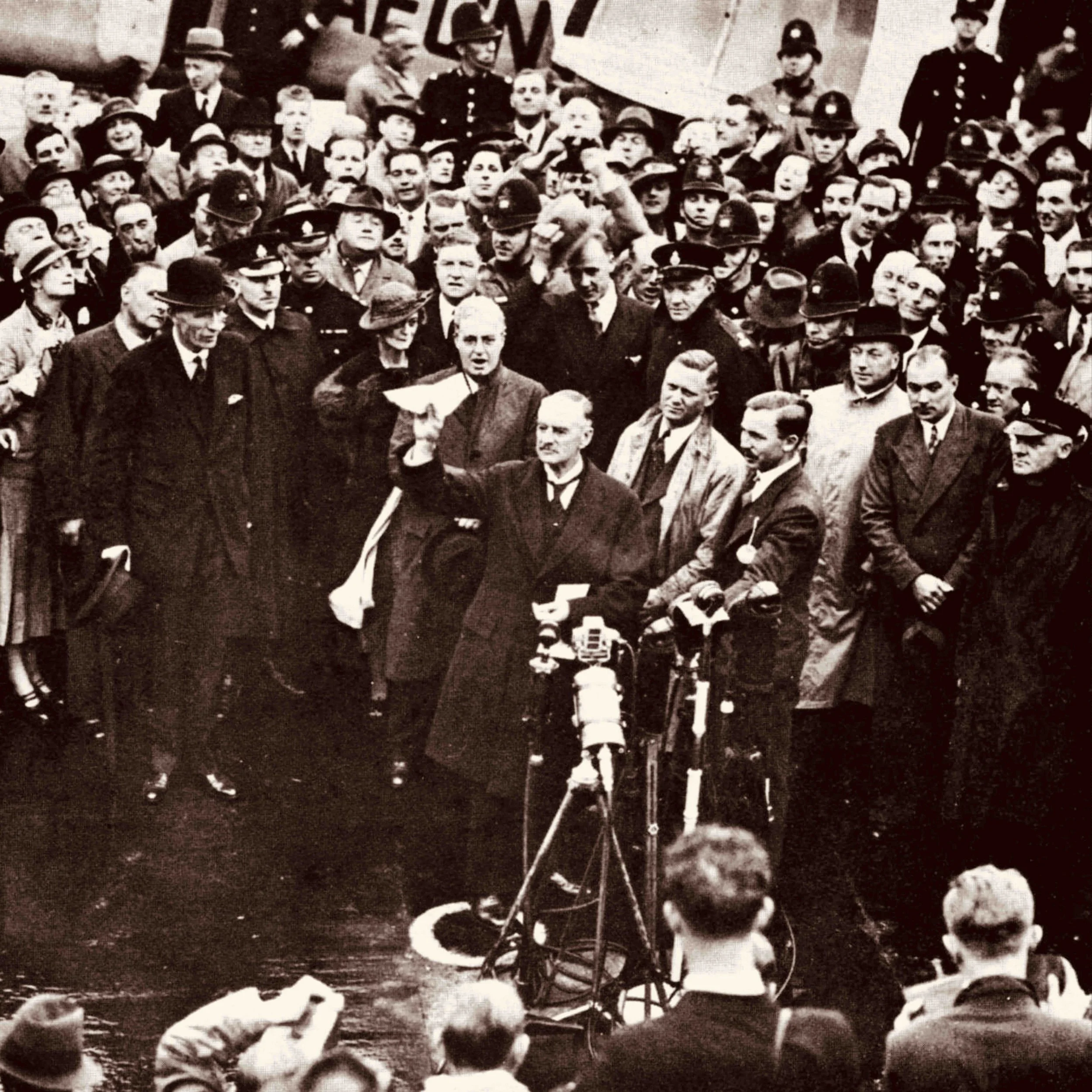The shadow of war
‘Extremely dangerous people exploited the authoritarian instincts of Britain’s rich and powerful in 1938.’
John sat down with Emily, a leading book blogger and the literary powerhouse behind the fabulous A Quintillion Words, to talk 1930s surprises, historical accuracy versus storytelling freedom and a spot of fantasy casting…
Why did you choose London in 1938 as the setting for We Are Made? Is there anything particular about the time and place that calls to you or that captured your imagination?
We Are Made isn’t just set in London, it’s set in Enfield, the suburb of north London where I grew up. Most of the adults I knew when I was a boy were profoundly affected by the Second World War and I wanted to write about what it must have been like for people in Enfield to feel caught up in the geopolitical movements sweeping across Europe in 1938.
The looming threat of war is a powerful backdrop. How do you think this tension and uncertainty influences your character’s actions or decisions in We Are Made?
As a student of history, the novel’s protagonist, William, recognises that today’s tensions and uncertainties herald tomorrow’s uncomfortable realities. Unfortunately, William’s not the only one who thinks like this – the novel’s principal antagonist always seems one step ahead of him!
How much research did you do to bring this era to life? Did you learn anything surprising or particularly interesting?
I have always been fascinated by the 1930s and I’d already read a lot about that decade before I started work on the novel. But, as I read deeper into the period, I was shocked at how easily Fascists and Nazi sympathisers were able to penetrate the British establishment. Extremely dangerous people exploited the authoritarian instincts of Britain’s rich and powerful in 1938 – we should not forget this, as we ponder present-day threats to our democracy.
Tell us more about the relationship between William and Elizabeth – was it always central to the plot of We Are Made, or was it something that naturally developed as you wrote?
William and Elizabeth have been with me for a long time and their relationship was always going to be central to the novel. They first appeared in sketches I wrote for a planned novel in the early 1990s but life intervened and I never got to write that book. It was important to me that Elizabeth had agency – even if some of her decisions are forced upon her by circumstances. She was a strong character right from those early sketches. She was always going to be far more than William’s ‘love interest’.
Tell us about your writing routine. Are you a planner or more spontaneous?
I wish I were a better planner but it’s just not in me! I start a book with a vague idea, an incident, perhaps, and a character or two. Then I plunge in and begin spontaneously writing scores of random scenes, while immersing myself in research matter. Slowly, a narrative forms and the research gets more focused, so as to support the emerging story. After an awful lot of this palaver, I learn where the story is going and what the final scene will be. There’s still plenty of work to do by this point but there’s a structure in place and that’s a tremendous help.
How do you balance historical accuracy with the freedom of storytelling?
The story comes first. But I do think that the stuff you make up should be plausible. For example, if you’ve done your research, you’ll know that it’s not implausible for Oswald Mosley to have addressed a crowd of Fascists in Bermondsey in 1938. So, when you come to write an imaginary scene featuring your characters at a Mosley rally in Bermondsey, you know you’re not stretching the truth too far.
If We Are Made was ever adapted into a film or series, who would you imagine playing the lead roles?
William and Elizabeth are young, and so are their friends. I’d like them to be played by a super-talented group of newcomers. I love that feeling when you watch a show with young actors in and you know you’re going to be seeing them again. Let’s have a solid line-up of British talent for the older supporting roles, though. How about Matthew Macfadyen as the rather mysterious Roger? Mark Rylance would be a good turn as Elizabeth’s Pa, Alton, and Keeley Hawes would be fab as her Ma, Sophie.
What are some of your own favourite books and authors? Are there any books that inspire you to write your own stories?
I read lots of novels when I was young but it was the Punk movement of the late 1970s that inspired me to write my own stuff, albeit in the form of song lyrics. Today, I enjoy a wide variety of writers but I particularly admire Barbara Kingsolver and William Boyd, who consistently marry compelling characters with big backdrops.
The literary inspiration for We Are Made is the long poem Autumn Journal, by Louis MacNeice. MacNeice wrote the poem in late 1938 and early 1939 and I love the way he combines contemplation of the huge geopolitical forces gripping Europe with reflections on his personal circumstances.
What are you currently working on? Is there anything you can share with us?
Absolutely! I’m hard at work on the follow-up to We Are Made. It’s set in 1942 and features some of the characters from the first novel. I’m planning to publish it in summer 2026.
What’s one piece of advice you’d give to new authors?
It’s not very original but my advice is to keep plugging away! Writing a novel is a marathon, not a sprint. You have to accept that some days will be about hard graft rather than soaring artistic vision. If you get really stuck, have a little rest and return to your manuscript with fresh eyes.
